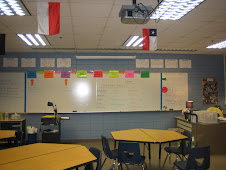Today in class, we analyzed Samuel Taylor Coleridge's sonnet "Work Without Hope." Kamala Markandaya used an image from the poem as the title of "Nectar in a Sieve" and included the last two lines of Coleridge's sonnet as the epigraph of the novel.
Before analyzing the poem students compared and contrasted the concepts hope and despair in a double bubble map. After discussing the poem in class, we returned to the double bubble map and added connections from the poem in the frame, answering the question: How did our ideas at the beginning of the hour play out in the poem?
Before analyzing the poem students compared and contrasted the concepts hope and despair in a double bubble map. After discussing the poem in class, we returned to the double bubble map and added connections from the poem in the frame, answering the question: How did our ideas at the beginning of the hour play out in the poem?

Work Without Hope
Lines composed 21st February, 1825
All Nature seems at work. Slugs leave their lair -
The bees are stirring -birds are on the wing -
And Winter slumbering in the open air,
Wears on his smiling face a dream of Spring!
And I the while, the sole unbusy thing,
Nor honey make, nor pair, nor build, nor sing.
Yet well I ken the banks where amaranths blow,
Have traced the fount whence streams of nectar flow.
Bloom, O ye amaranths! bloom for whom ye may,
For me ye bloom not! Glide, rich streams, away!
With lips unbrightened, wreathless brow, I stroll:
And would you learn the spells that drowse my soul?
Work without Hope draws nectar in a sieve,
And Hope without an object cannot live.





2 comments:
i thought comparing and contrasting "hope" and "despair" was really helpful. I didn't realize how they are similar in some ways before our discussion. I also thought it was interesting how my outside reading book, Nectar in a Sieve, is linked to this poem.
I think its interesting to look at the words hope and despair again after finishing the play today. Othello never "hoped" Iago was wrong. He just assumed Iago was an honest man, and ended up regretting it to a point that he took his own life. This lack of hope is the exact definition of: despair. Wierd
Post a Comment